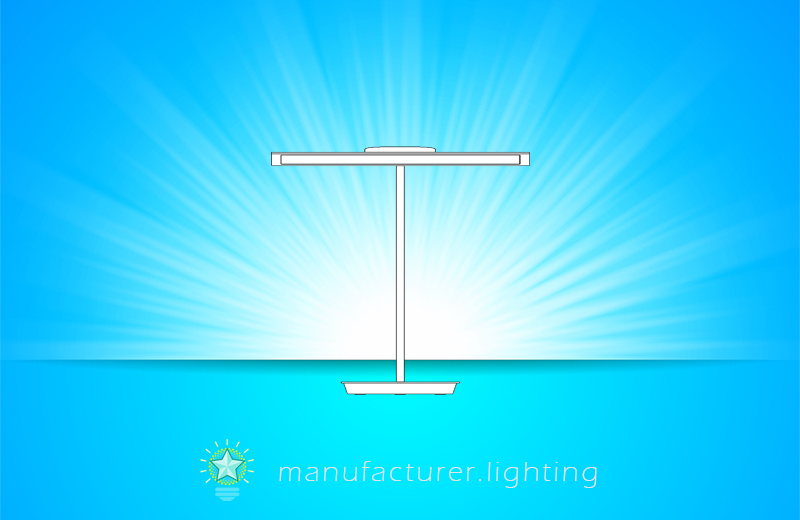
OLED desk lamps take advantage of the emerging organic solid-state lighting technology that is potentially providing a route to address the demand for healthy light sources that offer soft and energy efficient lighting for clear and fatigue-free visibility. LED technology has been employed ubiquitously for the past decade in residential, commercial, industrial, outdoor and a host of other lighting applications as energy-efficient alternatives to incandescent, fluorescent and other types of less efficient light sources. Nevertheless, LEDs are intrinsically point light sources and require secondary optics to diffuse and soften the uncomfortable, dazzling light-emitting spots. The ultimate emphasis on LED's economic benefits leads to the prevalence of relatively low CRI (typical Ra of 70-80) as a result of chasing high luminous efficacy. Accordingly, LEDs are not well suited to task lighting applications in which natural, high color fidelity white light is critical to avoid eyestrain and fatigue.
OLEDs are a highly desirable light source for desk/task lighting applications and have a sharp competitive edge over LEDs in that they're surface emission devices. The capability to generate evenly distributed light across its entire surface eliminates need for secondary optics which are required in LED lighting. Unlike LEDs that require a precise binning process to ensure consistent color temperature of the multiple LEDs embedded in the same light module, OLED's surface light emitting principle offers superior color accuracy and consistency with no pixelation concerns and other unfavorable effects of color binning associated with LED lighting. On top of that, the broad-band light emission of OLEDs produces a full spectral power distribution that makes them the closest artificial light source to natural sunlight and render colors with impressive accuracy. The warm white light of OLEDs has a color rendering index up to above 90, which means a faithful reproduction of the colors of various objects.
OLED desk lamps offer natural, eye-caring and safe illumination with superior lighting quality and color temperature for reading or writing intensive tasks. The soft pools of focal glow provide a sense of peace and harmony that flatters you and everything around you. The naturally broad emission spectrum of organic molecules makes entire visible color spectrum achievable for reproducing natural colors.
OLED lighting does not produce UV or IR radiation in its spectrum, virtually eliminating the health risks associated with close distance artificial lighting. OLED generates a much smaller amount of heat than in organic LED lighting which requires a bulky heat sink for thermal management. OLEDs are made of thin, self-luminous organic material layers and can be made on a variety of flexible and rigid substrates. The ultrathin, flexible and even rollable OLED panels hold great aesthetic potential in designing desk lamps.
